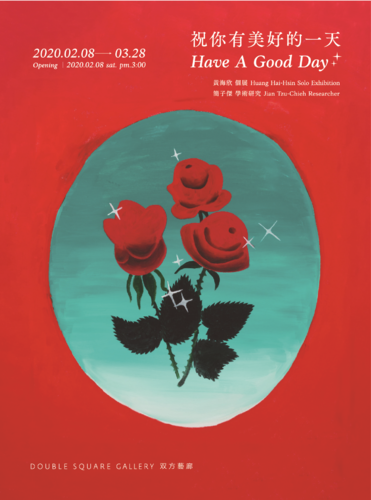Have A Good Day
2/8 (Sat) - 3/28/2020 (Sat)
Huang Hai-Hsin

Exhibition venue:Double Square Gallery 1F
Opening reception:2020.02.08 (Sat.) 15.00
Artist Talk:2020.02.22 (Sat.)15.00-17.00
Exhibition online viewing room: https://www.artsy.net/show/double-square-gallery-have-a-good-day-huang-hai-hsin-solo-exhibition
“As part of a generation marked by hedonism, people seem to know more but feel less. Catastrophes become assumptions; people practice suffering with laughter.” –Huang Hai-Hsin
Double Square Gallery is pleased to present New York-based artist Huang Hai-Hsin’s solo exhibition, Have a Good Day, from February 8 to March 28, 2020. Huang is known for combining ordinary scenarios, photojournalistic composition and unadorned brushstrokes to create seemingly absurd yet truthful interpretation of the inner state and psychological landscape of modern people. For the artist’s first solo exhibition at the gallery, we have specially invited art critic and scholar Jian Tzu-Chieh to serve as the academic chair. The exhibition features twenty-eight artworks in total, with fifteen new paintings created within the last couple of years and one video installation, bringing the audience a comprehensive presentation of Huang’s recent observation of a wide spectrum of characters and their behaviors.
Huang’s work is inspired by situations and activities found in the quotidian life, from which she employs simple yet strong brushstrokes to keenly depict the survival of common people in their everyday life. The exhibition title, “Have a good day,” originates from the artist’s personal experience and realization of living in New York for years. The customary greeting conforms to etiquette yet conveys no genuine feelings. The artist transforms this complex, contradictory feeling through her uncomplicated, rough images infused with a unique sense of humor, and documents ludicrous, unnerving, lonely and bizarre social scenes and phenomena that she has observed. For Huang, life is mostly consisted of strange, awkward, laughable and meaningless moments; and it is especially so in the present day when social media flourish and people only learn about the world and receive new information via the internet, in which they are oftentimes lost in false information.
A newly created series, Zoo, is on view in the exhibition, which comprises of various areas for different animal species, including African lion and wild animal area, Formosan monkey area, African pygmy goat area, and the area of koalas and other friendly animals. However, instead of the animals in these specified areas, the audience only see cold fences and empty spaces whereas the animals are all absent. With her brush, Huang truthfully lays bare the disappointment-filled experience of visiting zoos and precisely delineates modern people’s anxieties and aloofness. As it is stated by Jian Tzu-Chieh, “we are like the visitors that see no animals in the zoo; and we seem to have grown accustomed to this disappointment. However, it is also in this psychological state of disappointment, bordering on giving up, that a crevice emerges—the crevice that serves as the boundary that separated humans and animals as well as us and art.” In Huang’s new works, we can perceive her emphasis on the beautiful and absurd moments in life as well as the fragility of humans—whether it is in her mocking of varying living situations or the desolate scenes incomprehensible to rational mind and logical contemplation.